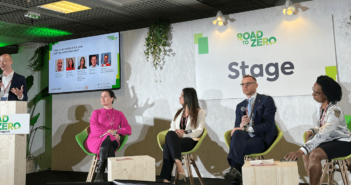Some 14 cities across Europe, the Americas and Asia have taken part in the first two editions of the global C40-Reinventing Cities competition, with a third edition set to be launched this spring.
For the first two editions of C40-Reinventing Cities, 33 winning projects are already in the implementation phase, with more new cities expected to submit projects for the third round.
Reinventing Cities is led by C40, a global network of nearly 100 city mayors founded in 2005 to halve carbon emissions. The aim of the competition is to create decarbonised and community-focused places, at the cutting edge of innovation in urban regeneration, and to showcase these inspiring projects globally, says C40.
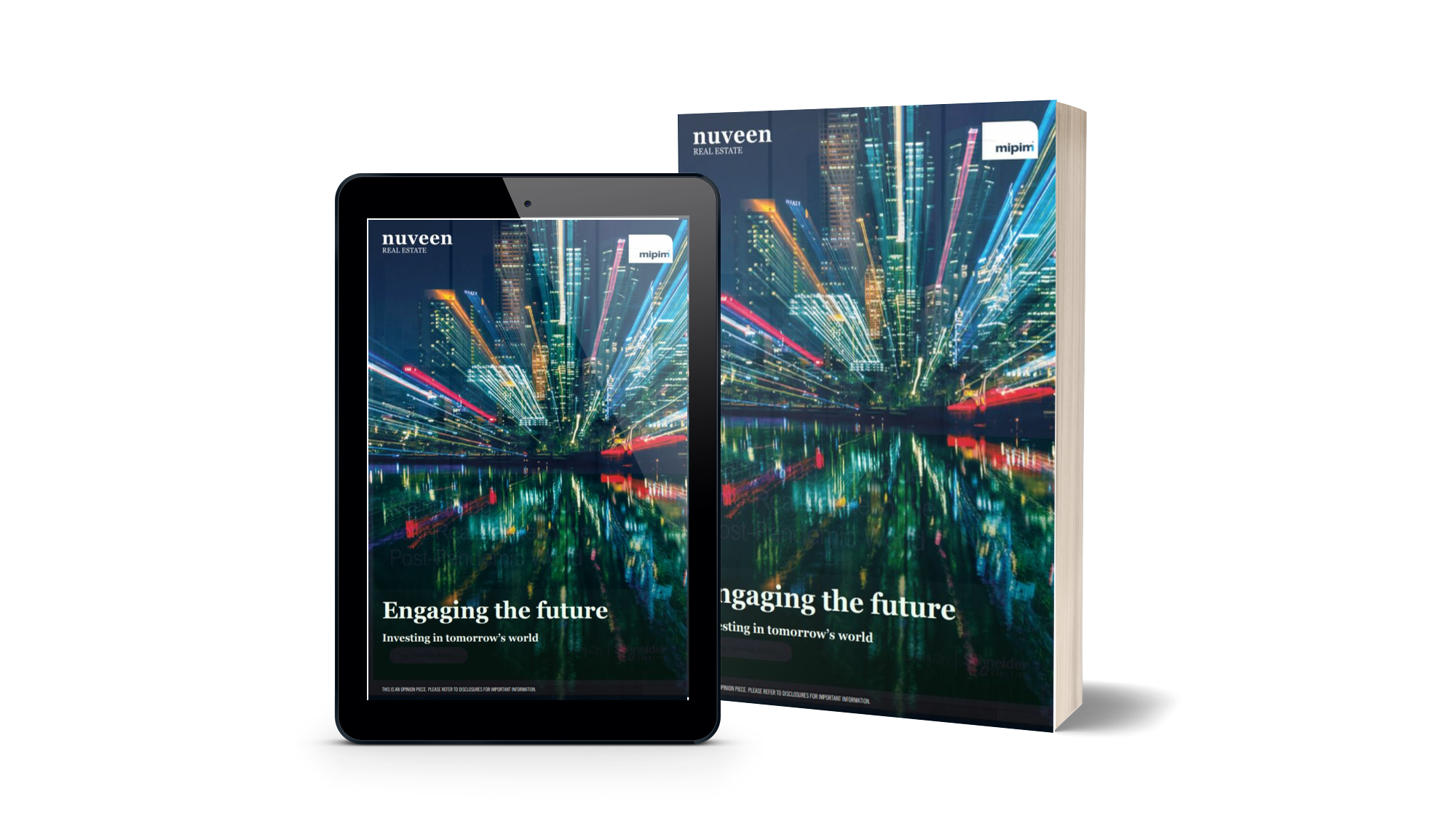
Engaging the futur
Investing in tomorrow’s world
As Hélène Chartier, head of zero carbon development at C40, explains: “This can only be achieved by working together at all levels of society, and especially by driving collaboration between the public and private sector.”
We look for projects that repurpose existing buildings or regenerate underutilised sites in urbanised areas – Hélène Chartier of C40
With the world’s urban population forecast to grow significantly over the coming decades, the global building floor area is expected to double by 2060. This represents the equivalent of adding an entire New York City to the world every month for 40 years, highlights Chartier.
To reduce carbon emissions, it is therefore key to stop urban sprawl and the “unsustainable lifestyle” associated with it. Instead, it is about fostering “compact, mixed-use development and complete neighbourhoods with core services and amenities that residents can easily walk or cycle to,” says Chartier. “In that sense, we look for projects that repurpose existing buildings or regenerate underutilised sites in the urbanised areas.”
Cities where low carbon is high on the agenda
The 14 cities to have taken part in the first two editions of the Reinventing Cities competition are: Auckland, Cape Town, Chicago, Houston, Lima, Madrid, Milan, Montreal, Paris, Quito, Reykjavik, Rio de Janeiro, Rome and Singapore.
Some 65% of the winning projects are net zero, points out Chartier. “However, when repurposing a building, if you include embodied and operational emissions, it is very complicated to reach net zero.”
Inspiring winning projects from the first two editions of C40-Reinventing Cities include schemes in Chicago, Milan, Paris, Reykjavik, Rome, among many others.
Two of these projects are among the top 10 low-carbon buildings for 2021, as chosen by architectural authority Dezeen magazine. The two are: Living Landscapes in Reykjavik and Campo Urbano in Rome.
A new height for sustainability in the windy city
Assemble Chicago is Chicago’s first zero carbon high rise. The project is in the heart of the downtown Loop district:
- On the upper flowers, the building delivers 100% social housing, with over 200 apartments for essential workers and mixed-income inhabitants.
- On the ground floor, the NeighborHub includes a food hall for minority-owned restaurants and spaces for local non-profit groups and residents, and a medical clinic.
- It is a car-free site, with bike parking and charging stations for e-bikes
- The building opens directly onto the Pritzker Park, which is being regenerated using native and adaptive species.
“The project is an inspiring development that not only achieves net zero, but which promotes equity and social justice,” says Chartier.
The winning team was led by non-profit developer The Community Builders, and architect and urban design practice Studio Gang.
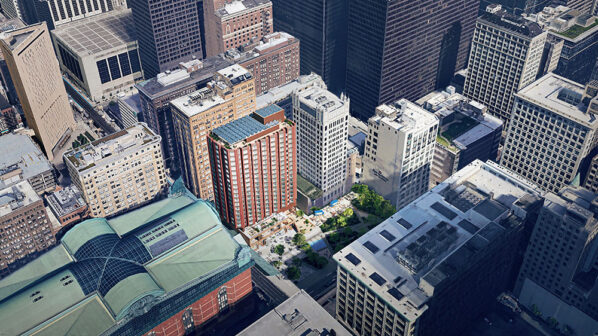
Assemble Chicago in the US © Studio Gang
A 14-hectare mixed-use, carbon-negative scheme in Milan
As part of the regeneration of the Macello district, ARIA is the first carbon-negative neighbourhood in Milan, thanks to an innovative energy district system that will supply renewable energy to the new mixed-use area and to surrounding neighbourhoods.
The 14-hectare project repurposes a former industrial complex of some 6,500m2 in area, mixing together new and historic buildings. It will include:
- Affordable homes for around 1,200 families.
- A new 30,000m2 campus for IED (the European Institute of Design).
- Housing for 600 students in the historic former slaughterhouse building.
- A range of other amenities and innovative workplaces, including the POD Science District.
- Around 45,000m2 of new public space with 2,000 new trees.
The architectural team includes Snøhetta Oslo, Barreca & La Varra, CZA-Cino Zucchi Architetti, Stantec and Chapman Taylor, who describes it as “one of the most important social housing projects in Europe”.
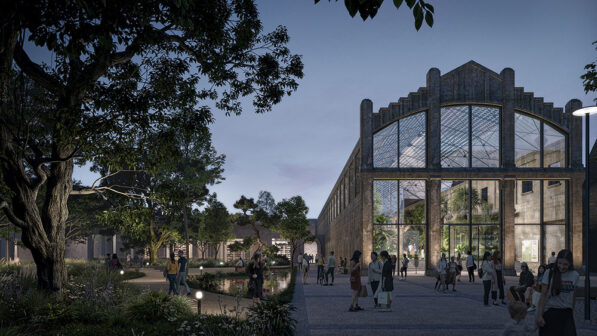
ARIA in Milan © Wolf Visualising Architecture
Repurposing for the 21st century economy
On the island of Montreal, Les Ateliers Cabot is designed to transform the Canadian Power Boat Corporation’s former industrial buildings into a hub for artists, entrepreneurs and tech companies:
- Les Ateliers Cabot is set to be net zero in operation and to achieve an ambitious 64% reduction in embodied carbon thanks to a maximum reuse of the existing buildings and new buildings made of wood and without basements (which are extremely carbon intensive).
- The project includes event spaces, artists’ studios, offices, retail, an industrial & tech incubator and an area for urban farming.
- Some 60% of the area is dedicated to green space, including a new urban forest.
The project is “community-based, self-developed, non-profit and partly socio-financed”. Project partners include Sid Lee Architecture, Arup and Gehl Studio.
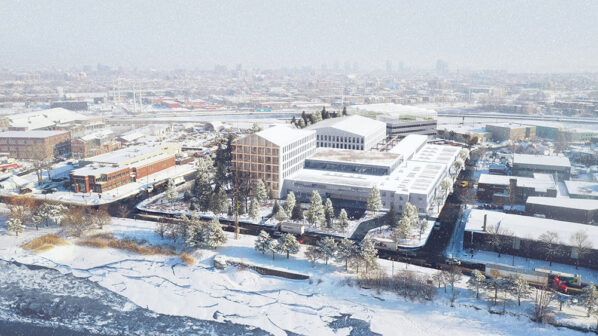
Les Ateliers Cabot in Montreal, Canada
Paris’ first zero carbon neighbourhood
On the eastern edge of Paris, Porte de Montreuil is the city’s first zero carbon neighbourhood, both in terms of operation and embodied emissions.
The scheme has a built area of around 60,000m2. Features include:
- On-site geothermal and photovoltaic solar energy production, which will also benefit the surrounding district.
- 80% of the superstructure (cross-laminated timber and stone) and 100% of the façades (terracotta brick and hemp) are made of local, bio-sourced materials.
- 100% of the spaces are designed to be ‘reversible’ (to change to another use).
- It offers 7,000m2 of new green space and 300 new trees, designed to help reduce temperatures by 3°C during heat waves.
- Zero-waste food court and cafés, and a 7,400m2 Grand Hall dedicated to a flea market.
- The project is also designed to reduce individual car usage – a key feature of a winning Reinventing Cities’ project.
“The objective of the City of Paris and its partners is to make Porte de Montreuil a pilot district for environmental excellence and a laboratory of the new economy,” says C40.

Engaging the futur
Investing in tomorrow’s world
The project team includes Nexity, Engie, Crédit Agricole Immobilier, and architectural practice Atelier Georges.
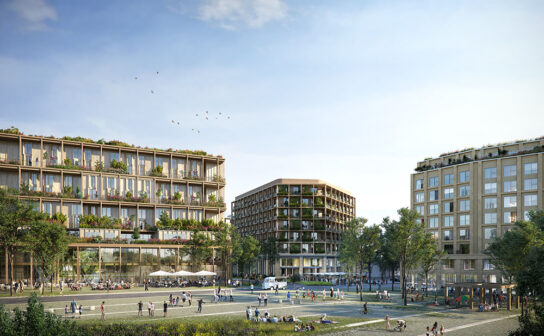
Porte de Montreuil in Paris, France
Cement silos repurposed for indoor farming
In what will be Iceland’s first circular building, two former cement silos in the capital Reykjavik are being repurposed to create a new hub for indoor farming: the Circular District.
The 2,850m2 site will include a zero-waste restaurant, a zero-waste store, a repair & share service, as well as a Bokashi composting service.
The Circular District is near the sea, with bike paths linking the buildings with the rest of the city. It is also near the city’s new bus rapid transit line.
The main architect is Reiulf Ramstad Arkitekter, while the Agricultural University of Iceland is acting as a consultant.
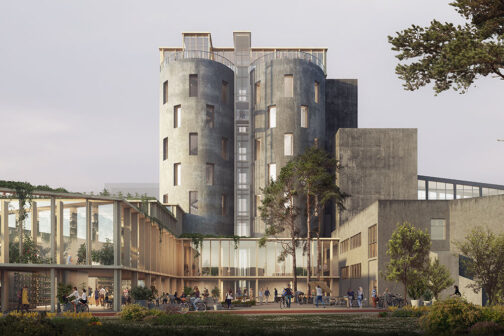
The Circular District in Reykjavik, Iceland
More Icelandic action on climate change
Also in Reykjavik is the Living Landscape project, or Lifandi Landslag, a 26,000m2 zero carbon, mixed-use building that will transform a former landfill site.
- This will be the largest wooden building in Iceland, while green space will cover three-quarters of the 9,000m2 site, including green roofs and a large, central garden.
- The project offers a mix of housing, for students, families and seniors, as well as workspaces, day-care facilities and local shops.
- The use of CLT is designed to reduce the building’s carbon footprint by almost 80% compared with a typical concrete building. The remaining embodied emissions will be offset through either wetland recovery or forestry, reports Dezeen
- Operational emissions are minimised through an integrated waste-heat recovery system, insulation and a renewable energy
Working on the project, among others, are Paris-based architects Jakob+MacFarlane and local practice T.ark. The project is due for completion in 2026.
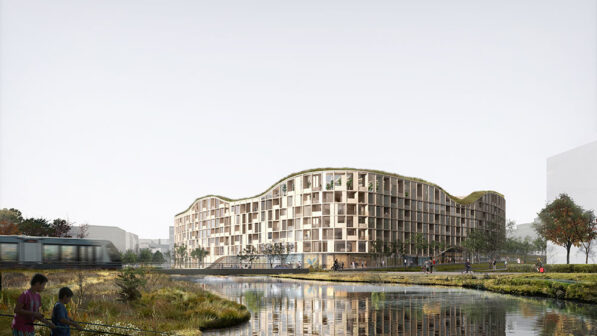
Living Landscape project, Iceland
From railway site to net zero carbon neighbourhood
The Roman project Campo Urbano is designed to transform a 41,000m2 disused railway site into Rome’s first net zero carbon neighbourhood.
The masterplan is designed around the concept of a car-free, 15-minute city, where locals can find all the essentials for their day-to-day life within a short walk or cycle ride away.
Camp Urbano includes housing, workspaces, retail, a student hotel and an energy park. It is designed to:
- Be self-sufficient in energy, with a mix of locally produced biomass power and rooftop photovoltaics for solar energy.
- Combine retrofits and ‘reversible’ biomaterial buildings.
- Consider embodied, operational and consumption-based emissions.
- Create a new, linear park connecting with Rome’s metropolitan ‘green loop’.
“It is a great combination of public and private space, with the private space opened to the public,” notes C40.
The architect is London-based Arney Fender Katsalidis.
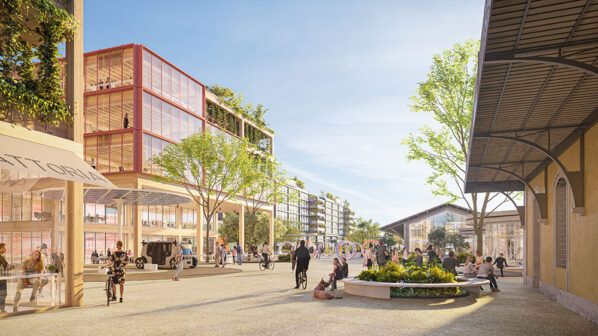
Campo Urbano in Rome, Italy
C40 leads the race to low carbon emission cities
Reinventing Cities is just one of several climate action initiatives organised by C40.
Others include:
- The Cities Race to Zero, which, working with partner organisations, has mobilised a thousand cities to join and align their strategies with the Paris agreement (the international treaty on climate change adopted in 2015), says Chartier.
- Together with Arup, C40 has launched the Green & Thriving Neighbourhood guidebook, which provides cities and the real estate industry with a framework and approaches to develop net zero and people-centred neighbourhoods.
- The Global Green New Deal and the Global Youth & Mayors Forum.
As we head to MIPIM 2022, the annual event of the world’s real estate industry, green is definitely the new black.
You can catch up with Hélène Chartier of C40 at MIPIM 2022, where she will be on the panel ‘Green is the New Black: Local initiatives to tackle global challenges’.
You may also be interested in:
- MIPIM World’s interview with Peter Cosmetatos of CREFC Europe on green finance.
- ‘CO2 emissions from the building sector: a reckoning is (fast) approaching,’ an article by Dr Jens Hirsch of Berlin-based BuildingMinds.
- The MIPIM white paper on The Race to Carbon Zero: decarbonising real estate.

